“One of the 10 best wines in the world.” – Michael Broadbent
“A Lafite in Languedoc.” – Gault et Millau
 Daumas Gassac vineyards planted amidst the Languedocian garrigue and protected forestlands, Aniane, France.
Daumas Gassac vineyards planted amidst the Languedocian garrigue and protected forestlands, Aniane, France.
My father once told me the tale about a Stradivarius. There was a Stradivarius that sat in the dusty folds of a shelf in the back of an obscure violin shop. People came and bought violins from the shopkeeper, for themselves, for their children, but the few who stumbled upon the dusty, old instrument quickly overlooked it, assuming that it couldn’t possibly be an instrument of any worth. Until one day, a master violinist stumbled into the store and like a mother to its child, was at once drawn to the exquisite instrument and knew it instantly for what it was. In his hands, beautiful music once again flowed forth from the Stradivarius.
This story came to mind as I drove away from Mas de Daumas Gassac, the 50 hectare Languedocian vineyard estate just outside of Aniane. This region, the Midi, is, of course the Languedoc-Roussillon, the region that produces the most wine not just in France but in the world. The region is, in every sense of the phrase, Sud de France.
What the region was not known for in 1970 was its quality wine. Flanked by Bordeaux, Burgundy and the Loire and Rhone Valleys, the Languedoc has long been known as the area that makes table wines or vins de table, the better ones just squeaking by with a vin de pays classification – or so goes the common perception. But not all wines need a classification in order to be good. Excellent, even. Indeed, in the case of Mas de Daumas Gassac, as much notoriety as this wine has attracted, it still eschews classification, its winemakers saying a polite “no thanks” to an AOC label.
Rooted In The Languedoc
Flash back to 1970 when a husband and wife team, Aime’ and Veronique Guibert, were in one of those life transitional phases and decided to buy a farm. What they found was this old rundown farm just outside of Aniane, situated in the middle of the Forest of Arboussas, that was still owned by two old spinster sisters of the Daumas family. It was also nestled next to the Gassac River and, in fact, was an old mill or “moulin.”
Tout ce qui brille n’est pas d’Or.
“Everything that glitters is not gold.”
…And, conversely, all that is gold does not glitter. In what has played out over the last 40 years since the Guibert family has grown their grapes and harvested their wines at the vineyard they planted around that old dilapidated mill, now the Mas de Daumas Gassac, is nothing short of an uncovering of a long-forgotten treasure. The treasure, arguably an unofficial Tresor de France, is the terroir of the Gassac Valley.
50 Hectares of Vineyards Surrounded by 100 Hectares of Mediterranean Woodland
The 50 hectares that Mas de Daumas Gassac rests on are home to the first wines ever produced in the Gassac Valley. Those wines were made for Charlemagne, the first King of France ca. 780 A.D. In fact, it was St. Benoit d’Aniane, one of Charlemagne’s counsellors and an Abbey, who created the first vineyard in the “magical” valley of Gassac some 1,200 years ago.
The magic is the microclimate. The terroir was rediscovered in 1971 by Henri Enjalbert a Professor of Geology at Bordeaux University. Veronique, also a PhD (in ethnology) and husband Aime’ Guibert were successful in getting Professor Enjalbert out to the Mas to check out not just the unusual red soil, which was found to be glacial soil, the calceous limestone (for the white varietals), but also to explore the cool microclimate that is derived from multiple factors: the Gassac River, several natural springs on the property, and the cool night air that descends from the Larzac mountains throughout the valley cooling the air surrounding the vines in August and September by about 5 to 10 degrees.
It was this same Prof. Enjalbert who declared to the Guiberts that they were sitting on “the ideal and unique terroir to produce a Grand Cru wine.”
Mas de Daumas Gassac Estate Today
Today it is the brothers Samuel, Gael, Amelien, Roman and Basile who take care of the estate. The Mas de Daumas Gassac label, with its sister label of Moulin de Gassac, produces about 150,000 to 200,000 bottles every year.
Walking through the Daumas Gassac vineyards is not just a walk through the vines but also a walk through the Forest of Arboussas, the Languedocien garrigue and, on this sweet summer day in June, a walk through veils of frolicking white and yellow butterflies. The ladybugs are there, too, when you stop and look closely.
Samuel Guibert, the estate’s winemaker who spent ten years in New Zealand before coming home to help run the family business, matter-of-factly explains that no chemicals, no fertilizers, nothing of the sort has ever touched this soil. “It’s virgin land,” he says. The family themselves source their drinking water from the freshwater springs on the property, so they are not about to poison themselves – or their vines. Their approach to land is “to preserve nature’s balance.”
What’s really unique about this estate, however, in addition to the glacial red soil and everything else…is that the 63 vineyard parcels are all planted interspersed throughout the property, fully integrated with the garrigue and the 3,000 hectares of protected forestland.
When you look up the translation for garrigue, the English is “scrubbrush” or just “garrigue.” What it is in fact is clusters of lavendar, mint, thyme growing wild since the millennia. This is the real Mediterranean. Aromatic, fragrant. So like hidden gardens of fruit nestled within aromatic parcels of herbs, the vineyards are planted throughout this preserved and untouched forestland of fragrant garrigue.
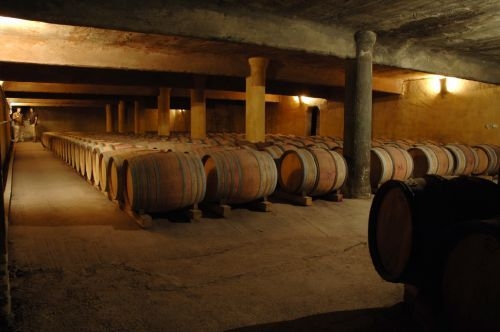
Mas de Daumas Gassac barrel cellar. French oak used not to influence taste but to enhance age-ability.
The Cellar
When the grapes are harvested by hand, they are then deposited via gravity into the underground fermentation cellar via a trapdoor which is up top at ground level. The fermentation cellar used to be an underwater tank. “We took what existed and made the best of it,” says Guibert, emphasizing that the whole process from sorting to destemming to macerating is all moved along purely by gravity and all done by hand.
This is a process not often seen any longer anywhere, including France. Some of the vineyards in Bordeaux used to use this gravity-fed process but most have since switched to automated. The difference being, explains Samuel, that the less the grapes are manipulated or handled, the better.
Similarly natural and using the resources at hand, the river next to the cellar helps to maintain the cellar at a cool 13-14 degrees C. in Winter and about 17-18 C. in summer with about 70% humidity. “It’s perfect temperatures for cellaring our wines,” says Samuel Guibert.
They only use about 5% new oak. “We don’t use oak to influence the taste of the wine, rather to enhance the capacity to age,” explains Guibert. You will often hear that a Mas de Daumas Gassac – red or white – has an ease of ability to age. “They are wines that can age, I like to say,” says Guibert, noting that the red that you drink and enjoy today will be a different wine from the one you cellar for 10, 15 and even 25 years. Different and perhaps equally enjoyable.
They blend for complex wine. The Guiberts only planted old strains of vines used before cloning, “to ensure traditional flavors and low yields.”Some of the planted vines are pre phyllaxera era and some are grafted onto American root stock. Oenologues refer to the Daumas Gassac vineyard as a “living museum” of Cabernet Sauvignon, Petit Manseng – a varietal that really only thrives in the south west region of France, – Viognier and also a “panoply” of 10% varietals that originate from “Biblical” Mediterranean vines – Israel, Lebanon, Syria, Armenia.
As for the vines that St. Benoit of Aniane planted for the Abbey and Charlemagne, “The existing vineyard that my parents found when they arrived at Mas Daumas in 1970 was indeed extremely ancient but no one can prove if it was the exact same vines as when St Benoit d’Aniane arrived,” says Guibert.
Emile Peynaud, the revered modern genius of oenology, told Mssr. Guibert back at the start of this quest for treasure that he had never been attendant at the birth of a Grand Cru. Forty years later, and we get to enjoy the fruits of that treasure quest.
Mas de Daumas Gassac Haute Vallée Du Gassac 34150 Aniane, France www.daumas-gassac.com

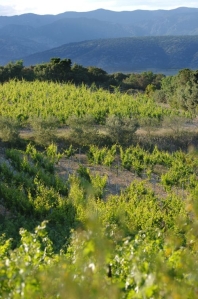
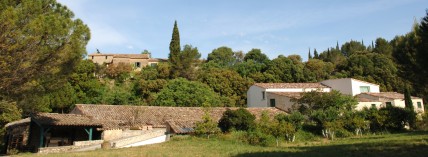


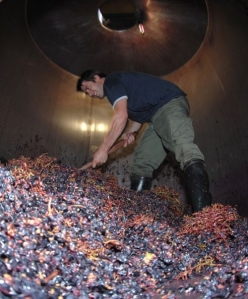

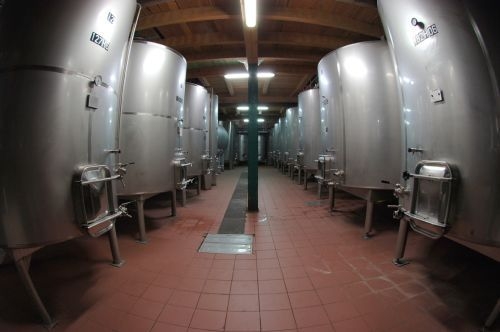
No comments:
Post a Comment